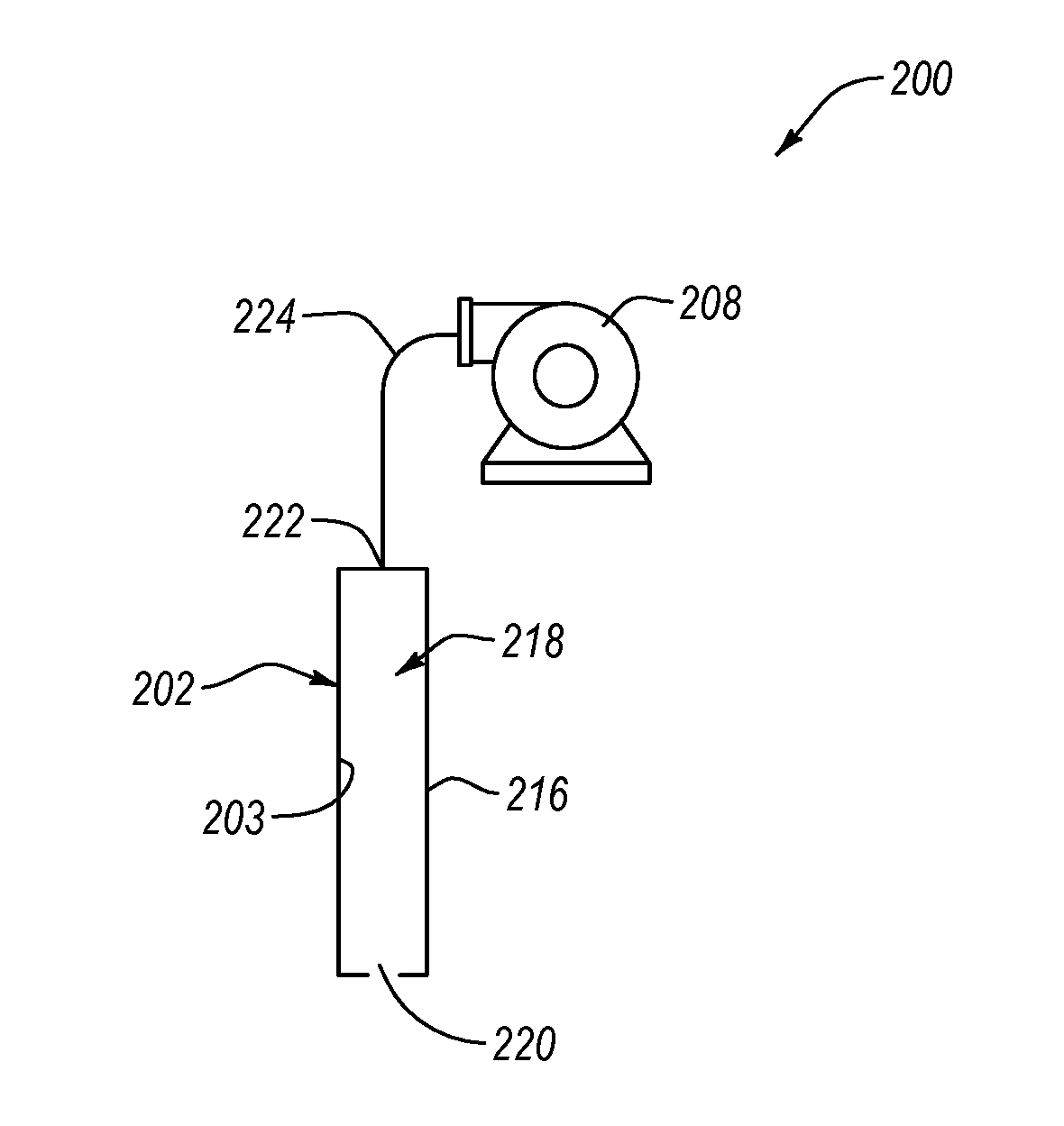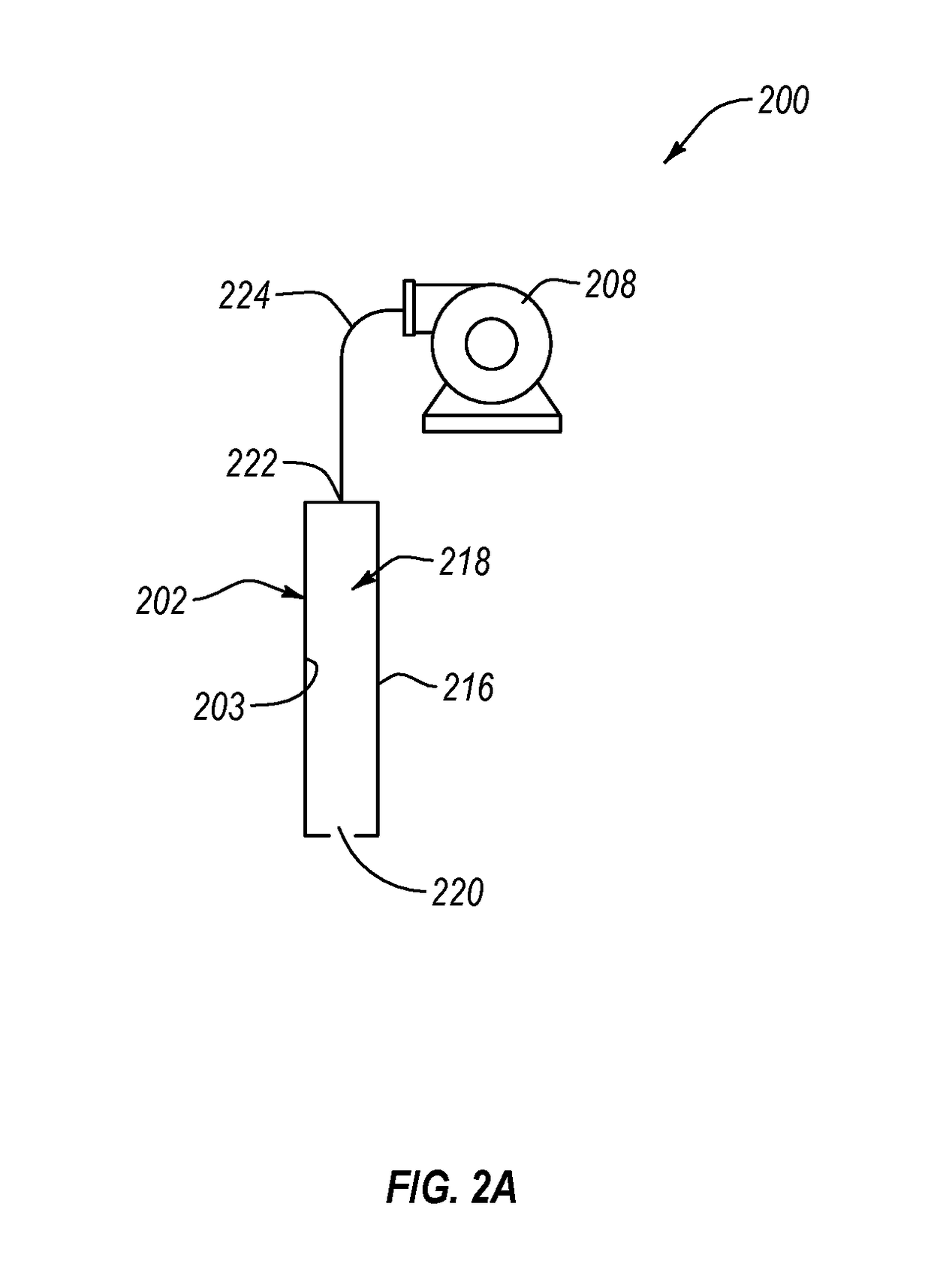Gaseous Mercury Detection Systems, Calibration Systems, and Related Methods
a gaseous mercury and detection system technology, applied in the direction of material analysis, particle separator tube details, instruments, etc., can solve the problems of mercury detection systems that mercury detection systems do not measure gmc as a compound, and conventional mercury detection systems do not measure gmc as its constituent elements
- Summary
- Abstract
- Description
- Claims
- Application Information
AI Technical Summary
Benefits of technology
Problems solved by technology
Method used
Image
Examples
working example
[0093]A gaseous mercury detection system was provided that was similar to the gaseous mercury detection system 400 shown in FIG. 4. The gaseous mercury detection system detection system included a gas supply having a high purity helium source and a permeation oven fluidly coupled to the gas supply. The permeation oven included a container therein. The container included a one-quarter inch stainless steel tube that was coated with SilcoNert® deactivated fused silica. A permeation tube was placed inside the container. The permeation tube included a one-eighth inch diameter polyfluoroalkoxy alkane heat-shrink tubing with polytetrafluoroethylene plugs that sealed both ends of the permeation tube. Mercury bromide (HgBr2) was placed within the permeation tube between the polytetrafluoroethylene plugs.
[0094]The gaseous mercury detection system also included a sample trap. The sample trap was an SIS Model 961 cryogenic focusing unit. The sample trap included a 0.25 millimeter inner-diameter...
PUM
| Property | Measurement | Unit |
|---|---|---|
| temperature | aaaaa | aaaaa |
| temperature | aaaaa | aaaaa |
| temperature | aaaaa | aaaaa |
Abstract
Description
Claims
Application Information
 Login to View More
Login to View More - R&D
- Intellectual Property
- Life Sciences
- Materials
- Tech Scout
- Unparalleled Data Quality
- Higher Quality Content
- 60% Fewer Hallucinations
Browse by: Latest US Patents, China's latest patents, Technical Efficacy Thesaurus, Application Domain, Technology Topic, Popular Technical Reports.
© 2025 PatSnap. All rights reserved.Legal|Privacy policy|Modern Slavery Act Transparency Statement|Sitemap|About US| Contact US: help@patsnap.com



